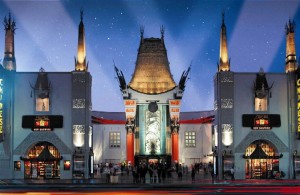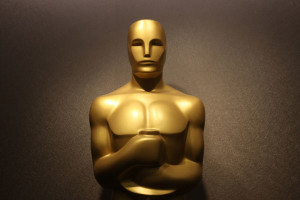It’s Academy Awards month, so Staffordshire Arts thought it would pay homage to the razzmatazz of tinsletown and look at the history of the biggest event in the movie awards calendar.
[h2]How the Academy of Motion Picture Arts began [/h2]
On January 11, 1927, M-G-M’s studio chief Louis B. Mayer invited 36 creatives and movie moguls from the film industry to dinner at the Ambassador Hotel in Los Angeles to hear a proposal to found the Academy of Motion Picture Arts and Sciences. Attendees included many of the biggest names in the industry at the time: Mayer, Mary Pickford, Sid Grauman, Jesse Lasky, George Cohen, Cecil B. DeMille, Douglas Fairbanks, Cedric Gibbons and Irving Thalberg. The group supported the concept and things came together quickly. By mid-March of that year, the first officers were elected, with Douglas Fairbanks as president.
On May 11, 1927, an official banquet was held at the Biltmore Hotel. Of the 300 guests, 230 joined the Academy, paying $100 each. Initially five branches were established: producers, actors, directors, writers and technicians.
[h3]The first Academy Awards[/h3]
Far from the eagerly anticipated and globally televised event it is today, the first Academy Awards ceremony took place out of the public eye during an Academy banquet at the Hollywood Roosevelt Hotel. Two hundred seventy people attended the May 16, 1929 dinner in the hotel’s Blossom Room; guest tickets cost $5. It was a long affair filled with speeches, but Academy President Douglas Fairbanks made quick work of handing out the statuettes.
Fifteen statuettes were awarded at the first ceremony for cinematic achievements in 1927 and 1928. The first Best Actor winner was acclaimed German tragedian Emil Jannings, and his statuette was the very first Academy Award ever presented.
The first presentation was the only one to escape a media audience; by the second year, enthusiasm for the Awards was such that a Los Angeles radio station produced a live one-hour broadcast of the event. The ceremony has been broadcast ever since.
[h3]The birth of the famous sealed envelope[/h3]
Initially the results were given in advance to newspapers so they could print the results in the newspapers in readiness for immediate distribution. However at the 1940 awards the Los Angeles Times broke the gentlemen’s agreement and printed the winners ahead of the event. That prompted the Academy to decide to keep the results secret from everyone including the media and prompted the Academy in 1941 to adopt the sealed-envelope system still in use today.
[h3]Grauman’s Chinese Theatre in Hollywood[/h3]
The Academy continued to hand out the awards at banquets – held at the Ambassador and Biltmore hotels – until 1942, when increased attendance made these dinner ceremonies impractical. Starting with the 16th Oscar ceremony, which was held at the famous Grauman’s Chinese Theatre in Hollywood, the event has always been held at a theatre.
Although Grauman’s is probably the most iconic of the Academy Award venues, it’s been held in many other theatres across Hollywood.
In 2002, the Kodak Theatre became the permanent home of the award ceremonies. renamed in 2012 to the Dolby Theatre, where this years (2013) 85th Academy Awards is to be held on February 24 2013
[h3]How did the Oscar statuette get its famous name?[/h3]
Officially the statuette’s nickname of ‘Oscar’ has unknown origins. Although no one knows for sure, Bette Davis, who won two Academy Awards during her career, reportedly said the statuette reminded her of her first husband, bandleader Harmon Oscar (“Ham”) Nelson.
There is also is a story that Margaret Herrick, the librarian and director of the Academy of Motion Picture Arts and Sciences, once said that the award looked just like her Uncle Oscar.
The statuette was designed by Cedric Gibbons, art director for MGM studios, and was sculpted by George Stanley. The statuette is that of a knight standing on a reel of film with his hands gripping a sword.
[h3]Televising the Oscars [/h3]
In 1953, the first televised Oscar ceremony enabled millions throughout the United States and Canada to watch the proceedings. Broadcasting in color began in 1966, affording home viewers a chance to fully experience the dazzling allure of the event. Since 1969, the Oscar show has been broadcast internationally, now reaching movie fans in over 200 countries.
[h3]Academy Awards Milestones[/h3]
1st Awards – Recognising the need to honor achievements that didn’t fit into fixed categories, the Academy presented two special awards at the very first ceremony in 1929: one to Warner Bros. for producing the pioneering talking picture “The Jazz Singer,” and one to Charles Chaplin for producing, directing, writing and starring in “The Circus.”
2nd Awards – The number of categories was reduced from 12 to seven: two for acting and one each for Outstanding Picture, Directing, Writing, Cinematography and Art Direction. Since then, the number of awards has slowly increased.
7th Awards – Film Editing, Music Scoring, and Song were added to the categories honouring films released in 1934. The year also brought the first write-in campaign, seeking to nominate Bette Davis for her performance in “Of Human Bondage.” (Academy rules now prohibit write-ins on the final ballot.) Also that year, the Academy retained the accounting firm of Price Waterhouse to tabulate the ballots and ensure the secrecy of the results. The firm, now called Pricewaterhouse Coopers, continues to tabulate the voting to this day.
9th Awards – The first Supporting Actor and Supporting Actress Academy Awards are presented, for performances in films of 1936. The honours went to Walter Brennan for “Come and Get it” and Gale Sondergaard for “Anthony Adverse.”
10th Awards – The Irving G. Thalberg Memorial Award was presented for the first time at the ceremony held in 1938. The honour went to Darryl F. Zanuck.
12th Awards – Fred Sersen and E. H. Hansen of 20th Century Fox were the first winners of the Academy Award for Special Effects. They were honoured for their work in the 1939 film “The Rains Came.”
14th Awards – In 1941, a documentary category appeared on the ballot for the first time.
20th Awards – The first special award to honour a foreign language motion picture was given in 1947 to the Italian film “Shoe-Shine.” Seven more special awards were presented before Foreign Language Film became an annual category in 1956.
21st Awards – Costume Design was added to the ballots for 1948.
25th Awards – For the first time, the Oscar presentation was televised. The NBC-TV and radio network carried the ceremony, honouring the films of 1952, live from Hollywood with Bob Hope as master of ceremonies, and from the NBC International Theatre in New York with Conrad Nagel as host.
29th Awards – The Jean Hersholt Humanitarian Award was established and Y. Frank Freeman was its first recipient.
36th Awards – The Special Effects Award was divided into Sound Effects and Special Visual Effects beginning with the honours for films released in 1963.
38th Awards – The Oscar ceremony in 1966 was the first to be televised in colour.
41st Awards – The April 14, 1969, Oscar ceremony was the first major event held at the new Dorothy Chandler Pavilion of the Los Angeles County Music Centre.
54th Awards – Makeup became an annual category, with Rick Baker winning for his work on the 1981 movie “An American Werewolf in London.” The Gordon E. Sawyer Award, recognizing technological contributions to the industry, was established.
74th Awards – The Animated Feature Film Award is added, with “Shrek” winning for 2001.







